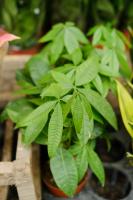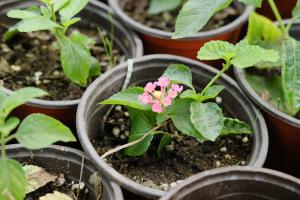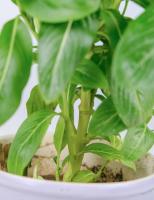Where is a Good Place to Plant a Fig Tree?
Figs are a delicacy that have been enjoyed for centuries. They are not only delicious, but also rich in fiber, vitamins, and minerals. If you are a foodie or just love gardening, you might be curious about the best place to plant a fig tree. In this article, we will discuss where you should plant a fig tree in order to get the most out of this perennial fruit tree.
Consider Your Climate and Zone
The first thing to consider when planting a fig tree is your climate and USDA plant hardiness zone. Fig trees require a warm and long growing season to fully mature and produce fruit. They thrive in warm, sunny climates with mild winters. If you live in a cold, frosty environment, you might want to consider growing a dwarf fig tree in a container so that you can move it indoors during the winter.
Sun and Soil Requirements
Figs grow best in soil that is well-drained and rich in organic matter. They prefer a slightly acidic soil pH of between 6.0 and 6.5. When it comes to sunlight, fig trees require at least 8 hours of direct sunlight per day to thrive. Make sure you find an area in your yard that gets plenty of sunlight and has well-drained soil.
Spacing and Planting
When it comes to planting a fig tree, you should space them at least 15 feet apart to ensure adequate air circulation and to prevent crowding. Dig a hole that is twice as wide and as deep as the root ball. Set the tree in the hole, making sure that the soil level around the trunk matches the surrounding soil level. Water the tree thoroughly and apply a layer of mulch around the base of the tree to help retain moisture and prevent weed growth.
Maintenance and Care
Once your fig tree is properly planted, you should give it some time to establish itself before you start to see any fruit. In the meantime, make sure to water it regularly and fertilize it with a balanced fertilizer in the spring and summer months. Prune your fig tree in the winter to remove dead, damaged or diseased branches. You should also thin out any excess growth to ensure good air circulation and optimal fruit production. With proper care and attention, your fig tree will provide you with delicious fruit for years to come.
Conclusion
If you're looking to plant a fig tree, there are a few things you should consider before getting started. Take into account your climate and USDA plant hardiness zone, the sunlight and soil requirements, spacing and planting, and maintenance and care. Choosing the right location and ensuring proper maintenance will help ensure a bountiful harvest of this delicious fruit. Happy planting!

 how many times do yo...
how many times do yo... how many planted tre...
how many planted tre... how many pine trees ...
how many pine trees ... how many pecan trees...
how many pecan trees... how many plants comp...
how many plants comp... how many plants can ...
how many plants can ... how many plants and ...
how many plants and ... how many pepper plan...
how many pepper plan...






























